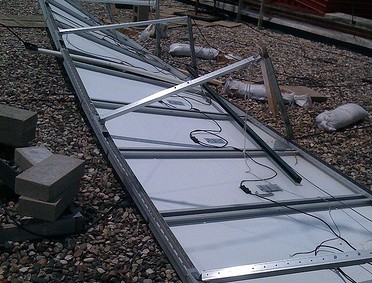When you install a solar power system on your home or business in Queensland, there is a ninety-nine percent chance that your system is connected to the grid. These systems produce electricity that flows from the solar panels to the inverter and then overflows to the grid.
If there is a black out in your area then your solar power system will automatically shut down and prevent electricity flowing into your home and the grid. This is a safety feature that modern solar inverters come standard with in order to protect our friends at Ergon and Energex.
How does cutting the power to the home protect the electricians?
If there is a blackout in your town or suburb, then there is a high possibility that there is a single fault that has caused the blackout. Ten years ago, before the solar boom, electricity was generated by local power stations and travelled through routes until it reached homes and businesses. This being said, it was much easier to isolate the flow of electricity in the instance of a blackout, making it safe for the electricians to begin repairs on the damaged poles and wires.
Now there are hundreds, if not thousands of homes with rooftop solar panels in a single suburb. So if there is a blackout in a town or suburb, there is a nine out of ten chance that electricity is flowing in both directions. One being the power station and the other being the rooftop solar panels that are scattered throughout the district. Keeping this in mind, it would be very difficult for Ergon or Energex to knock on the door of every home that has solar panels and ask them to switch off their solar inverters. So to tackle this enormous task, the solar inverter manufacturers engineered an automatic cut off switch that cuts the flow of electricity in the instance of a blackout. Pretty clever right?
How to prepare for a flood or a storm in South East Queensland
Following the standard shutdown procedures provided by the installers or manufacturers is essential when preparing for an upcoming flood, storm or cyclone occurrence. The main shutdown procedures must be stationed at the inverter or the main switchboard. If you are unsure about how to do this, it is best to get in contact with the solar company, installer or the manufacturer of the inverter.
What to do after the storm hits
Never attempt to reconnect the PV solar systems right after a storm or cyclone if there is existing damage to the roof. The moisture can cause the system to be live and can electrocute you in the process. Inspect the system visually from a safe distance and ask a licensed electrical contractor or installer for assistance if there are any existing concerns. A CEC-accredited installer or electrical contractor can test or recommission the solar power system to ensure that it is safe. Upon switching the system back on, be sure to monitor the inverter to guarantee that the system continues to work properly.
During the floods
Never attempt to switch off a solar PV system during a flood. Doing so could possibly lead to shock or electrocution. Water conducts electricity guys so don’t be a cowboy. Stay clear and wait for the flooding to be over, then contact a licensed electrician or solar panel installer.
Also, do not assume the system is safe even if the supply has been disconnected by Ergon Energy or Energex. DC voltage can still be produced by the systems if there is daylight. Solar PV systems do not need mains power to generate electricity; thus, you need the services of a CEC-accredited installer or licensed electrical contractor to shut down the PV array completely to ensure your safety.
After the flooding
Even when the flood water has receded, never attempt to operate switches because moisture left in the components can cause the PV systems to go live and you can suffer a fatal shock even if the mains power is not connected or turned on.
Only a CEC-accredited installer can recommission the system safely. There is a list of CEC-accredited solar installers on AustralianSolarQuotes.com.au. It is easy to find one in your area by simply searching through our free directory. If an installer is not available, a licensed electrical contractor may be contacted to make sure that the system is safe. The inverter should be replaced if the component has been submerged or partly submerged.
In conclusion. DON’T RISK IT! If you are unsure, it is more than likely not safe. Contact a professional and seek advice.


